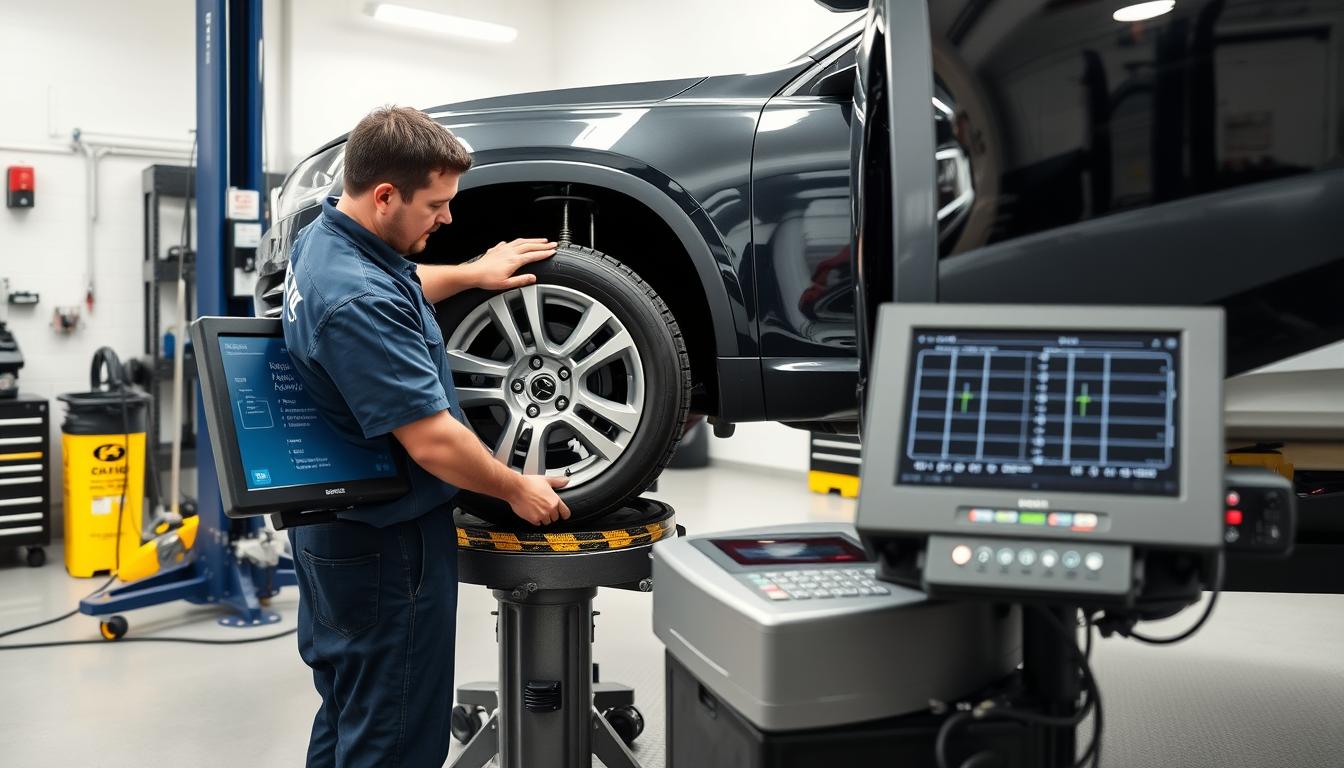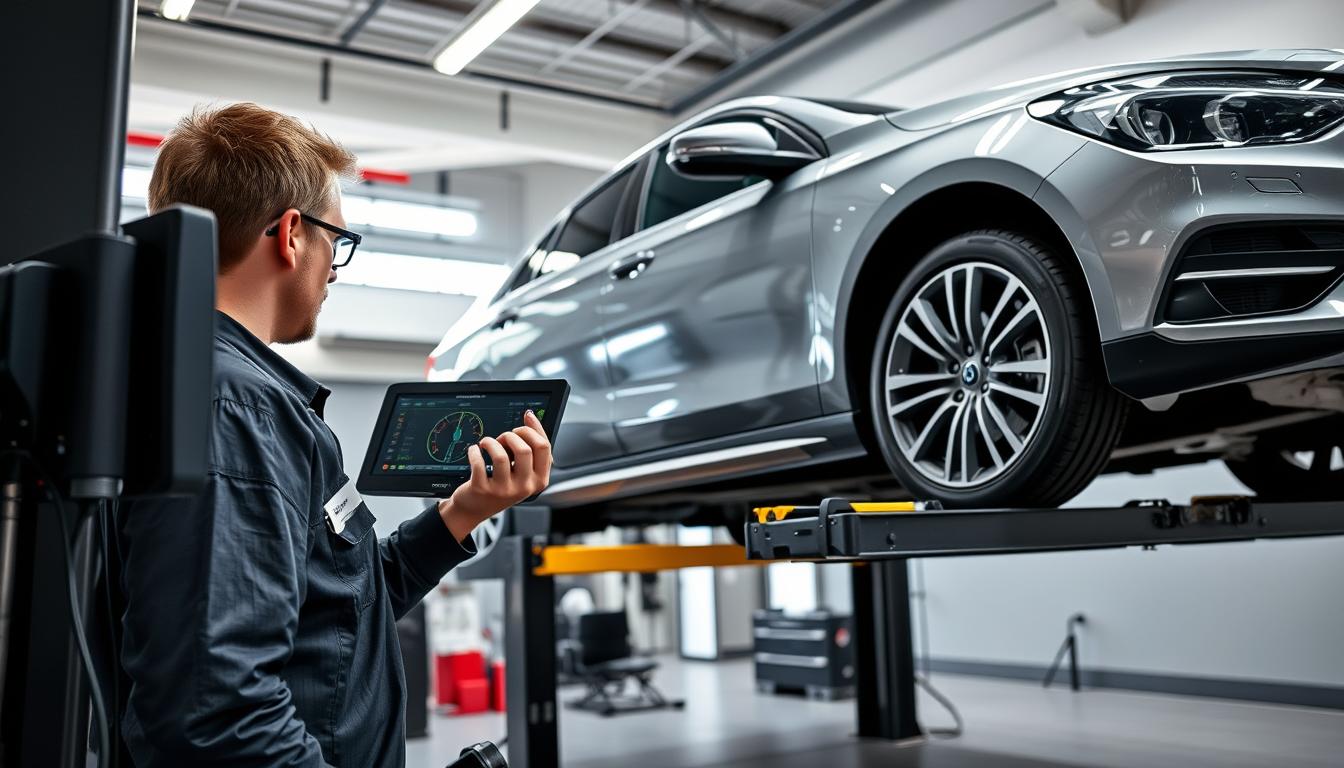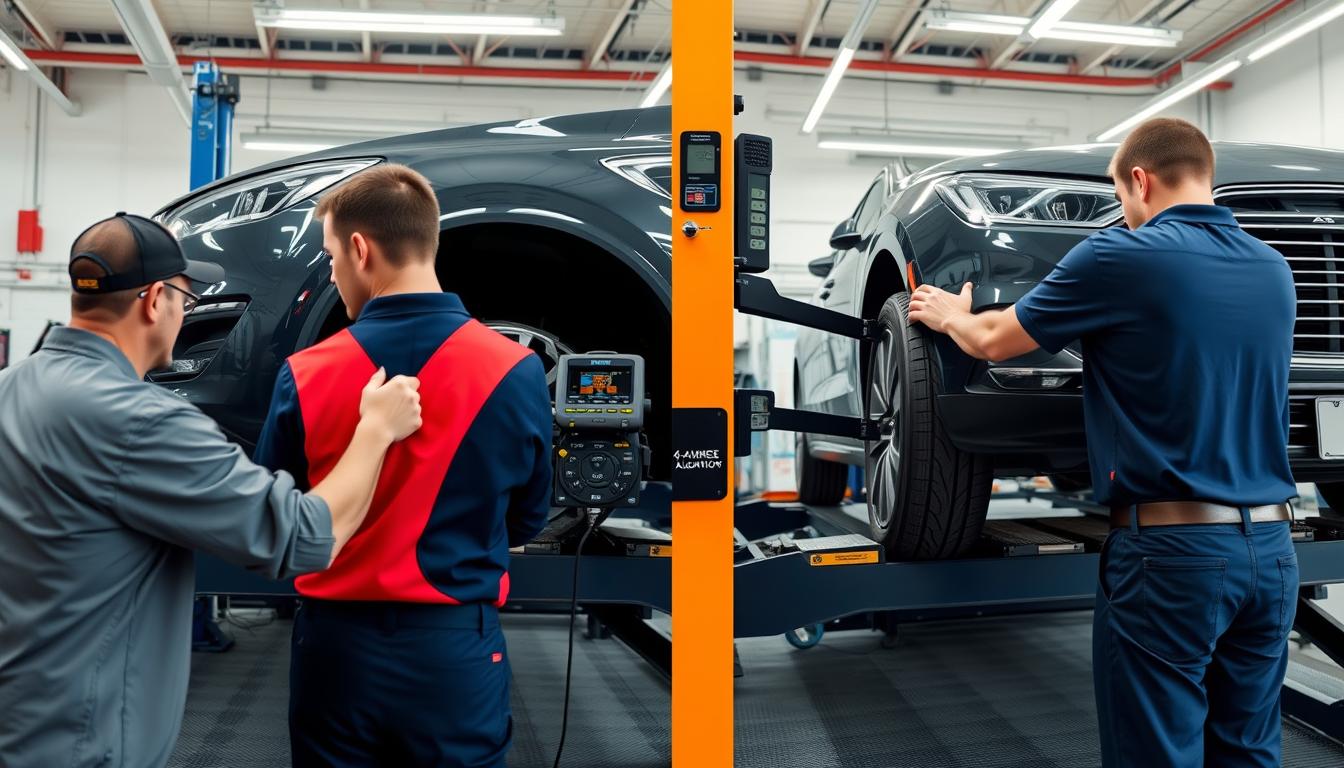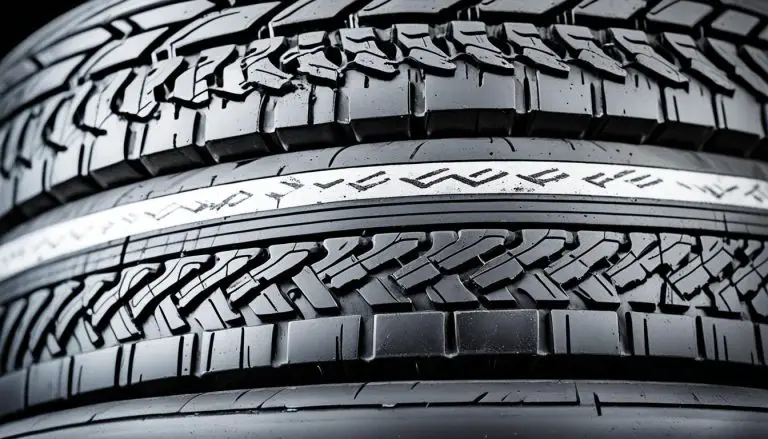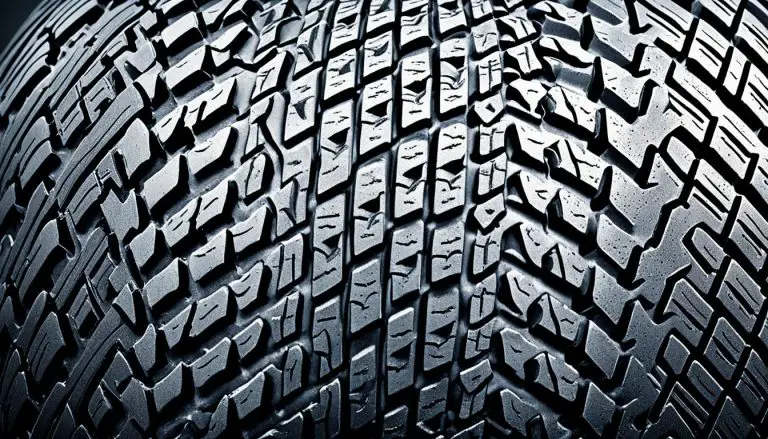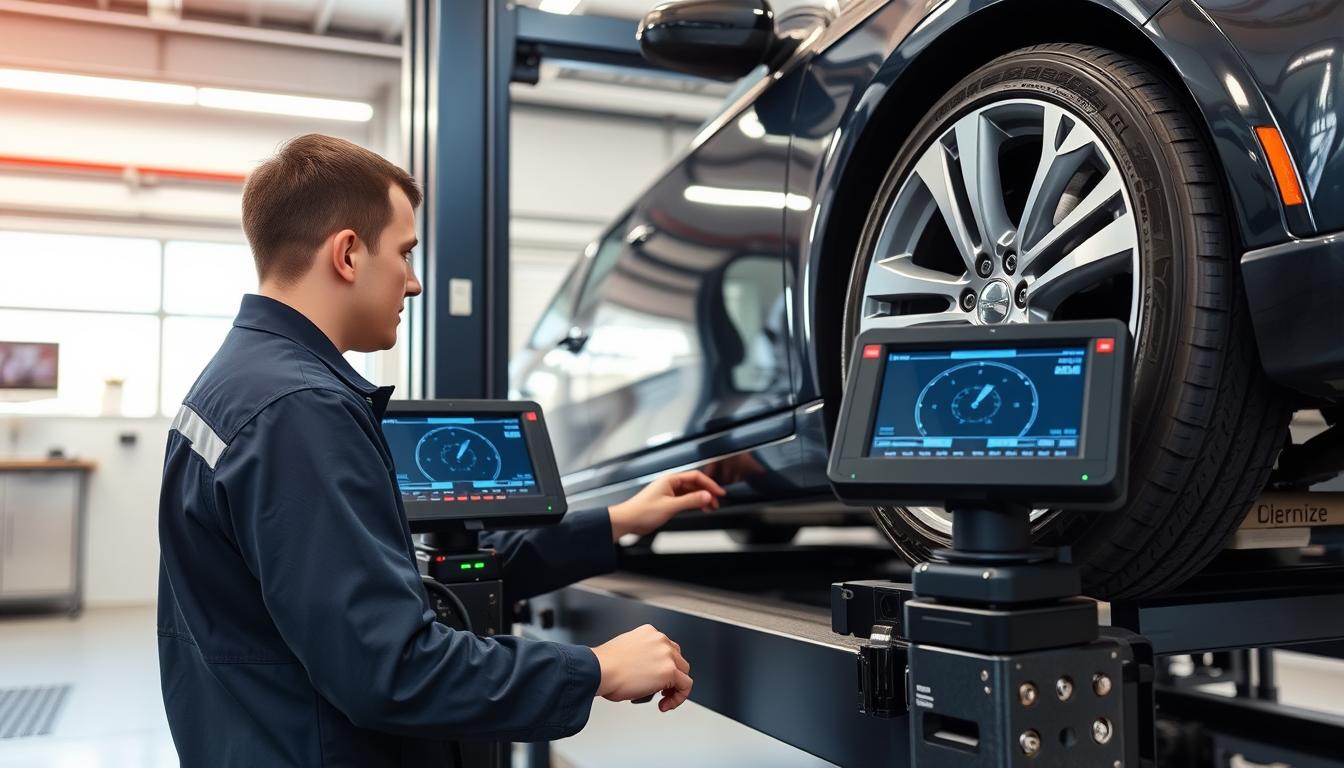
Wheel alignment and balancing are two distinct but complementary services that keep your vehicle running smoothly and safely. While they address different aspects of tire performance, many auto shops offer them as a bundle to save you time and money. If you’re wondering about the tire balance and alignment cost in 2025, you’ve come to the right place. This guide breaks down current pricing, explains what affects costs, and helps you determine when these services are necessary.
What’s the Difference Between Alignment and Balancing?
Before discussing costs, it’s important to understand what you’re paying for. These services address different aspects of your vehicle’s performance but are often confused.
Wheel Alignment
Alignment involves adjusting the angles of your wheels to manufacturer specifications. Technicians adjust three main angles:
- Camber: The inward or outward tilt of the wheels when viewed from the front
- Caster: The angle of the steering axis that affects stability and steering
- Toe: The direction your tires point relative to the center of the vehicle
Proper alignment ensures your vehicle drives straight, handles correctly, and prevents uneven tire wear.
Wheel Balancing
Balancing addresses weight distribution around each tire and wheel assembly. Technicians:
- Mount wheels on a balancing machine
- Spin them to identify heavy spots
- Add small weights to counterbalance these spots
Balanced wheels eliminate vibrations, provide a smoother ride, and extend the life of your tires and suspension components.
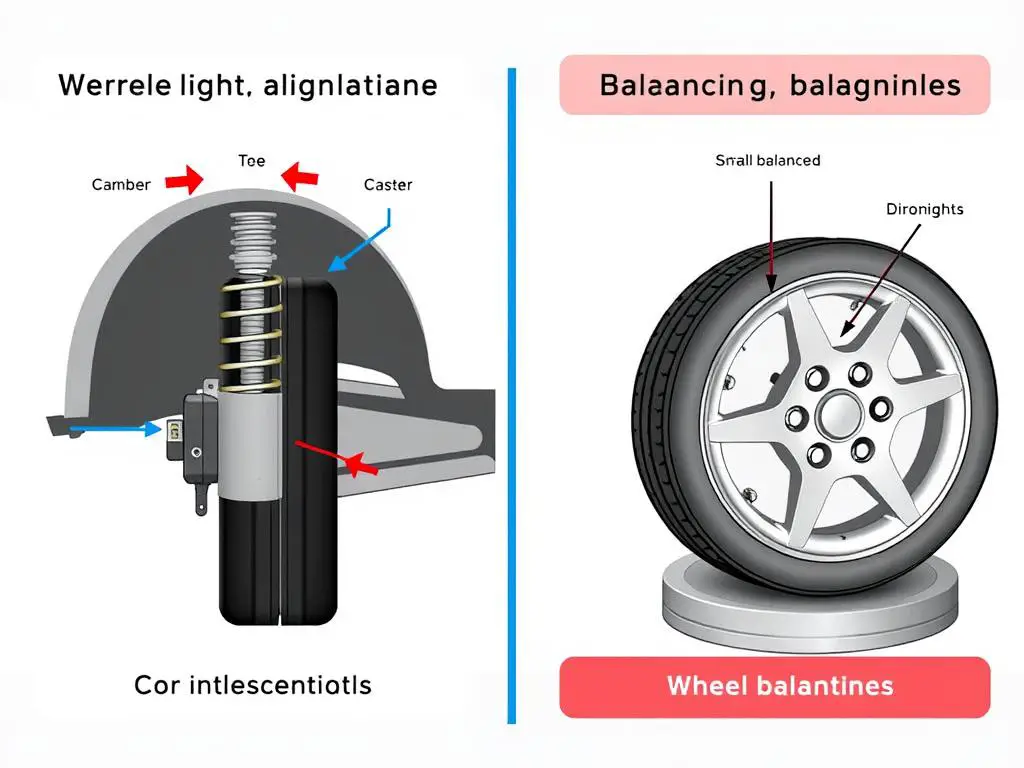
Average Cost of Wheel Alignment & Balancing Together in 2025
In 2025, the combined wheel alignment balance cost has seen moderate increases due to inflation and advancing technology. Here’s what you can expect to pay:
| Service | Average Cost (USD) | Range |
| Wheel Alignment Only | $75 – $120 | $50 – $150 |
| Wheel Balancing Only | $20 – $50 (per tire) | $15 – $60 |
| Alignment + Balancing (All 4 Wheels) | $100 – $160 | $80 – $200 |
Most service centers offer package deals when you get both services together, saving you around 10-15% compared to purchasing them separately. The cost for a wheel alignment and balance varies based on several factors we’ll explore next.
Ready to Get Your Wheels Aligned?
Find certified technicians in your area who can provide both alignment and balancing services at competitive rates.
Factors That Affect Alignment & Balancing Cost
Understanding what influences the cost of wheel alignment and balancing can help you budget appropriately and recognize when quotes are reasonable.
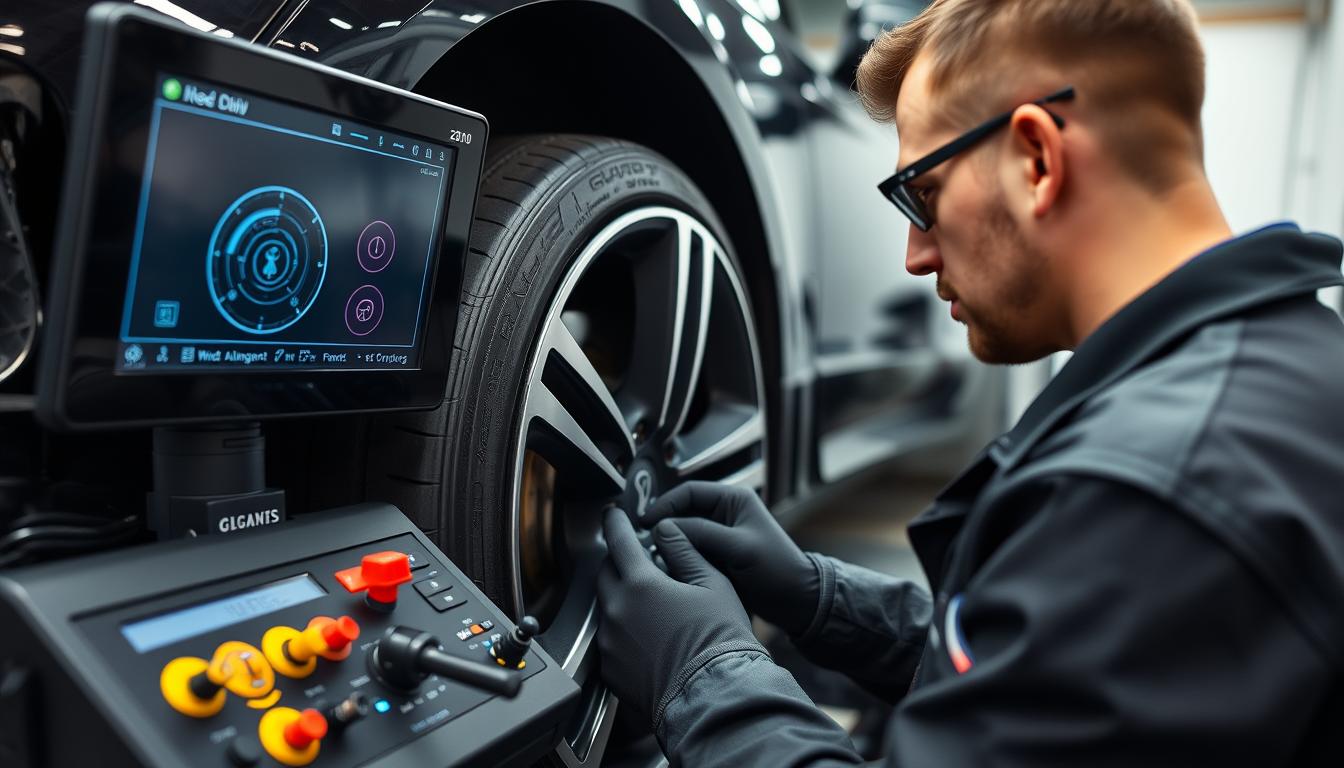
Vehicle Type
Larger vehicles like SUVs and trucks typically cost 10-20% more than sedans due to their weight and complexity. Luxury and performance vehicles often require specialized equipment and may cost 30-50% more than standard vehicles.
Alignment Type
A front-end alignment (two wheels) costs less than a four-wheel alignment. However, most modern vehicles with independent suspension require four-wheel alignment for optimal performance and tire wear.
Shop Type
Dealerships typically charge 20-30% more than independent shops. Chain auto centers often offer competitive pricing and frequent promotions but may have varying service quality.
Location
Urban areas generally have higher labor rates than rural locations. Regional economic differences can create price variations of 15-25% across different parts of the country.
Equipment Quality
Shops with advanced 3D alignment technology may charge more but provide more precise adjustments. Basic alignment equipment may result in lower costs but potentially less accurate results.
Additional Repairs
If suspension components need replacement before alignment can be performed properly, costs will increase significantly. Common parts like tie rods or control arms can add $200-500 to the total bill.
Wheel Balancing and Alignment Near Me — Why Prices Vary
When searching for “wheel balancing and alignment near me,” you’ll likely find a range of prices. Here’s why local costs can differ significantly:
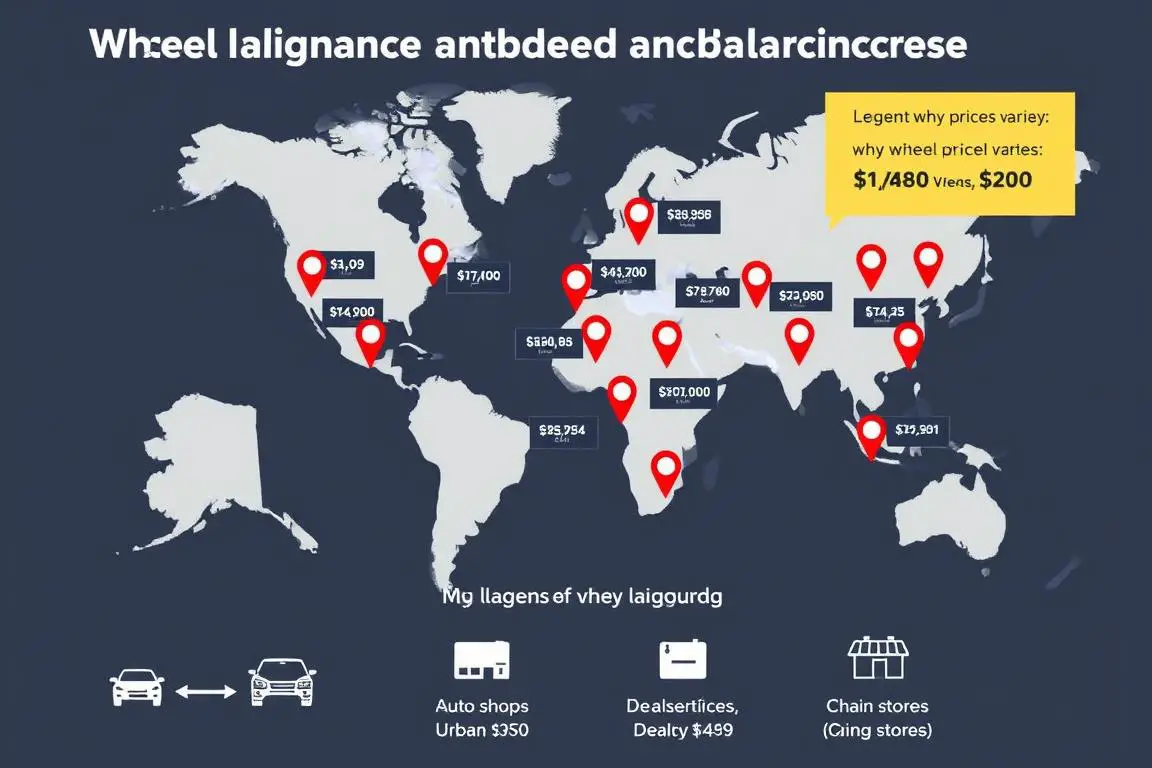
Local Market Factors
- Labor rates: Vary by up to 35% between regions
- Rent and overhead: Urban shops pay more for space
- Competition density: More shops can mean better prices
- Regional cost of living: Affects overall service pricing
Shop-Specific Factors
- Technician expertise: Certified specialists may charge more
- Service guarantees: Lifetime warranties add value
- Bundled services: Packages with tire rotation or other maintenance
- Seasonal promotions: Many shops offer spring/fall alignment specials
Pro Tip: Call multiple shops in your area and ask about their wheel alignment and balancing packages. Many offer price matching or first-time customer discounts that aren’t advertised online.
Do You Always Need Both Services Together?
While alignment and balancing complement each other, they address different issues. Here’s when you might need one, the other, or both:
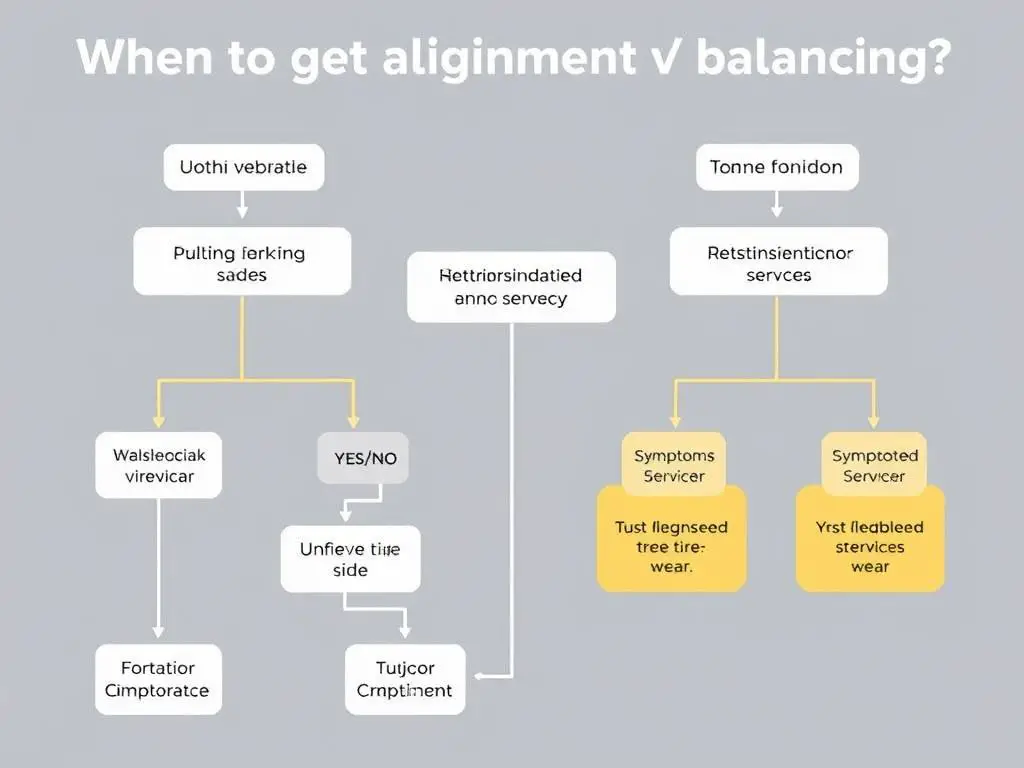
When Balancing Alone Is Enough
- You feel vibrations at certain speeds
- You’ve just purchased new tires
- Your steering wheel shakes
- It’s been over 15,000 miles since last balance
When Alignment Alone Is Enough
- Your vehicle pulls to one side
- Your steering wheel is off-center
- You notice uneven tire wear patterns
- You’ve recently replaced suspension parts
When Both Services Are Recommended
- After hitting a major pothole or curb
- When installing new tires
- Following any suspension work
- If you experience both pulling and vibration
- As part of regular maintenance (every 2 years)
“While you can get these services separately, combining them often makes sense financially and ensures your vehicle’s handling is completely optimized. Most alignment issues eventually lead to balancing problems and vice versa.”
How Often Should You Get Wheel Alignment and Balancing?
Knowing when to schedule these services helps you maintain your vehicle properly while avoiding unnecessary expenses:
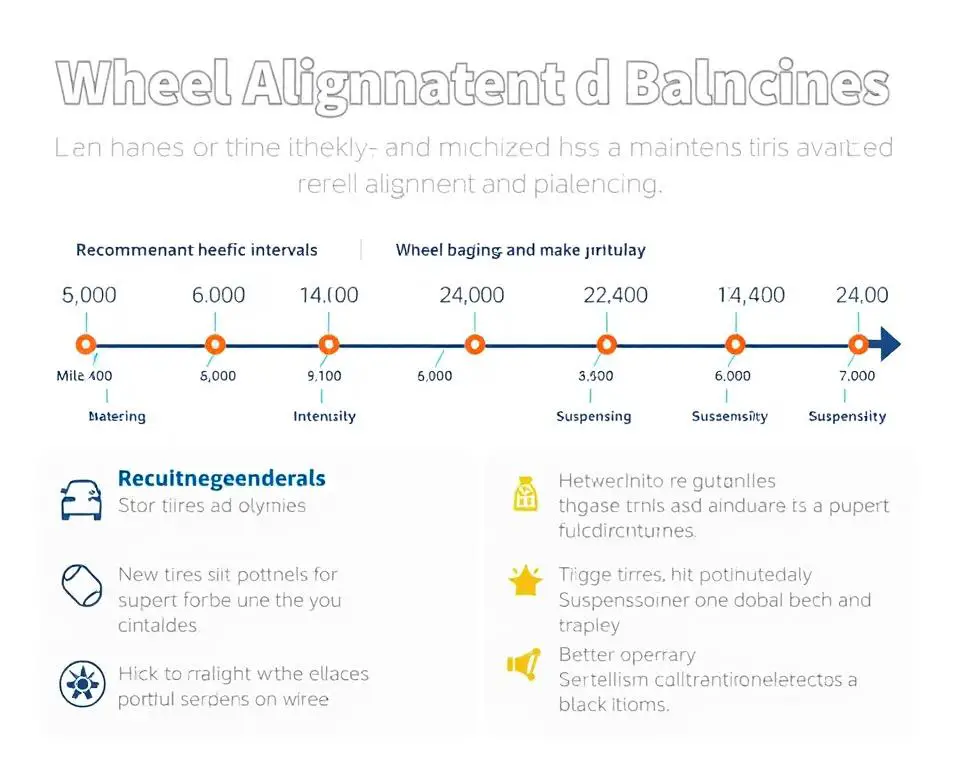
Recommended Alignment Schedule
- Every 2-3 years or 15,000-30,000 miles under normal driving conditions
- Annually if you frequently drive on rough roads or in areas with many potholes
- After any significant impact (hitting curbs, potholes, or minor accidents)
- When replacing suspension components like struts or control arms
- When you notice uneven tire wear or pulling to one side
Recommended Balancing Schedule
- Every 5,000-6,000 miles or with each tire rotation
- When installing new tires (always balance new tires)
- After tire repairs or patching
- When you feel vibrations at certain speeds
- If you notice new weights are missing from your wheels
Money-Saving Tip: Many tire shops offer free lifetime balancing when you purchase tires from them. Similarly, some auto centers provide alignment warranties that cover unlimited alignments for 1-3 years for a one-time fee. These can save you significant money if you drive in areas with poor road conditions.
FAQs About Alignment & Balancing Costs
How much does tire balance and alignment cost together in 2025?
In 2025, the average cost for combined wheel alignment and balancing service ranges from 0 to 0 for all four wheels. This price varies based on your vehicle type, location, and the service provider you choose. Chain auto shops often offer promotional packages that can reduce this cost, especially during seasonal specials.
Is alignment included with tire balancing?
No, alignment is not typically included with basic tire balancing. They are separate services that address different aspects of wheel performance. However, many shops offer discounted packages when you get both services together, which can save 10-15% compared to purchasing them separately.
Is balancing cheaper than alignment?
Yes, balancing is generally less expensive than alignment. A typical wheel balancing service costs – per tire, while alignment starts at -0 for just the front wheels and 0-0 for all four wheels. Balancing is less complex and requires less specialized equipment than alignment.
Does insurance or warranty cover alignment and balancing?
Standard auto insurance typically doesn’t cover routine maintenance like alignment and balancing. However, if these services are needed due to a covered accident, insurance may pay for them. Extended warranties and some new car warranties might cover alignment if it’s related to a defect in covered components. Always check your policy details.
Is tyre balancing and alignment cost higher for SUVs and trucks?
Yes, SUVs and trucks typically cost 10-20% more for alignment and balancing compared to standard sedans. This is due to their larger size, heavier weight, and more complex suspension systems. Luxury and performance vehicles also generally cost more due to specialized equipment requirements.
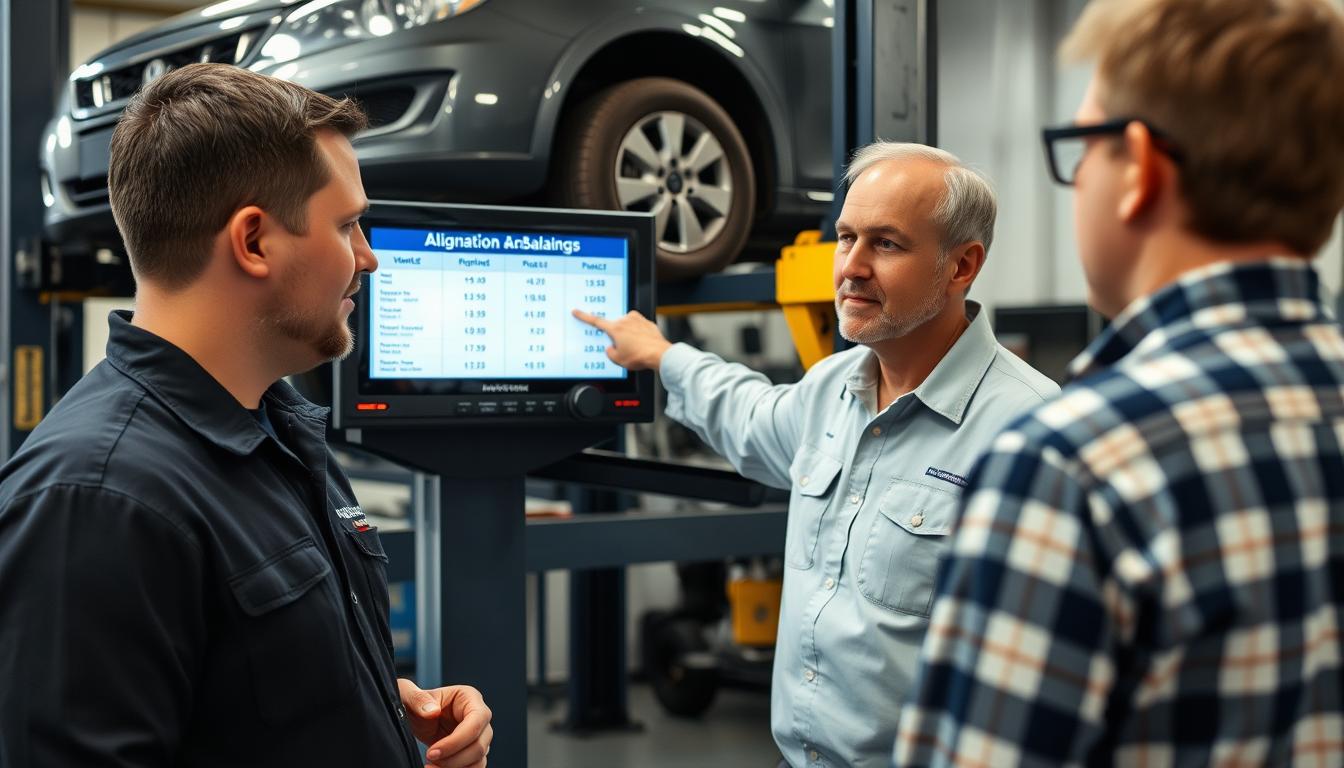
Final Thoughts — Saving on Wheel Alignment & Balancing in 2025
Proper wheel alignment and balancing are investments in your vehicle’s performance, safety, and longevity. While the combined cost of $100-$160 might seem significant, these services can save you much more by extending tire life, improving fuel efficiency, and preventing premature wear on expensive suspension components.
Check for Packages
National chains like Firestone, Walmart Auto Centers, and Discount Tire frequently offer alignment and balancing packages at reduced rates. Look for seasonal promotions, especially in spring and fall when many drivers address maintenance after winter or before summer travel.
Consider Warranties
Many shops offer lifetime alignment programs for a one-time fee of $150-$200. If you keep your vehicle for several years or drive on rough roads, these can provide significant savings over paying for individual alignments.
Bundle with Other Services
Scheduling alignment and balancing when you’re already having other work done (like tire replacement or rotation) can reduce the overall labor cost since the wheels are already being removed.
Ready to Schedule Your Wheel Service?
Find certified technicians in your area who can provide both alignment and balancing services at competitive rates.
Remember that while price is important, quality matters too. Proper alignment and balancing require precision equipment and experienced technicians. A slightly higher upfront cost for quality service can prevent expensive problems down the road.
